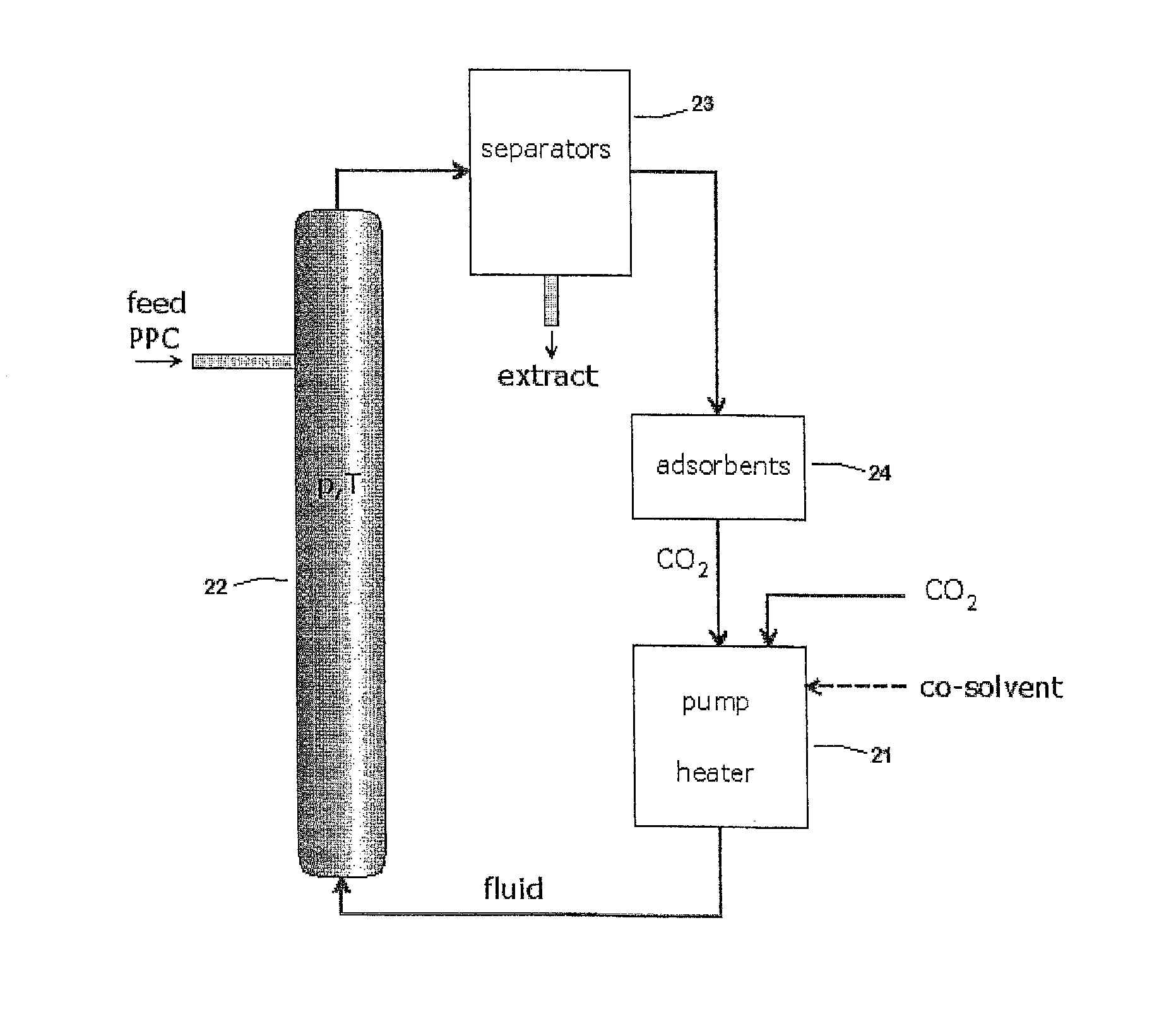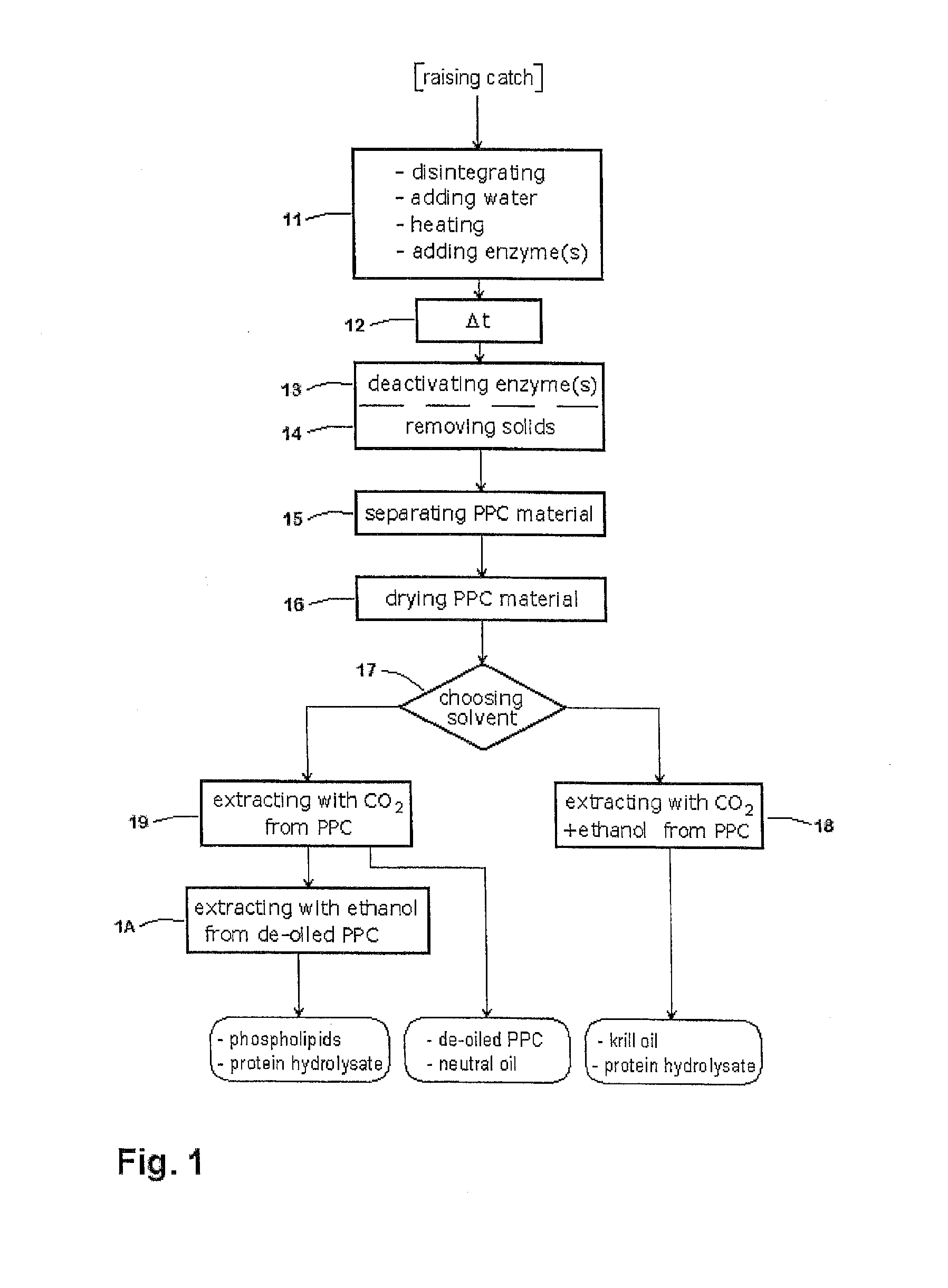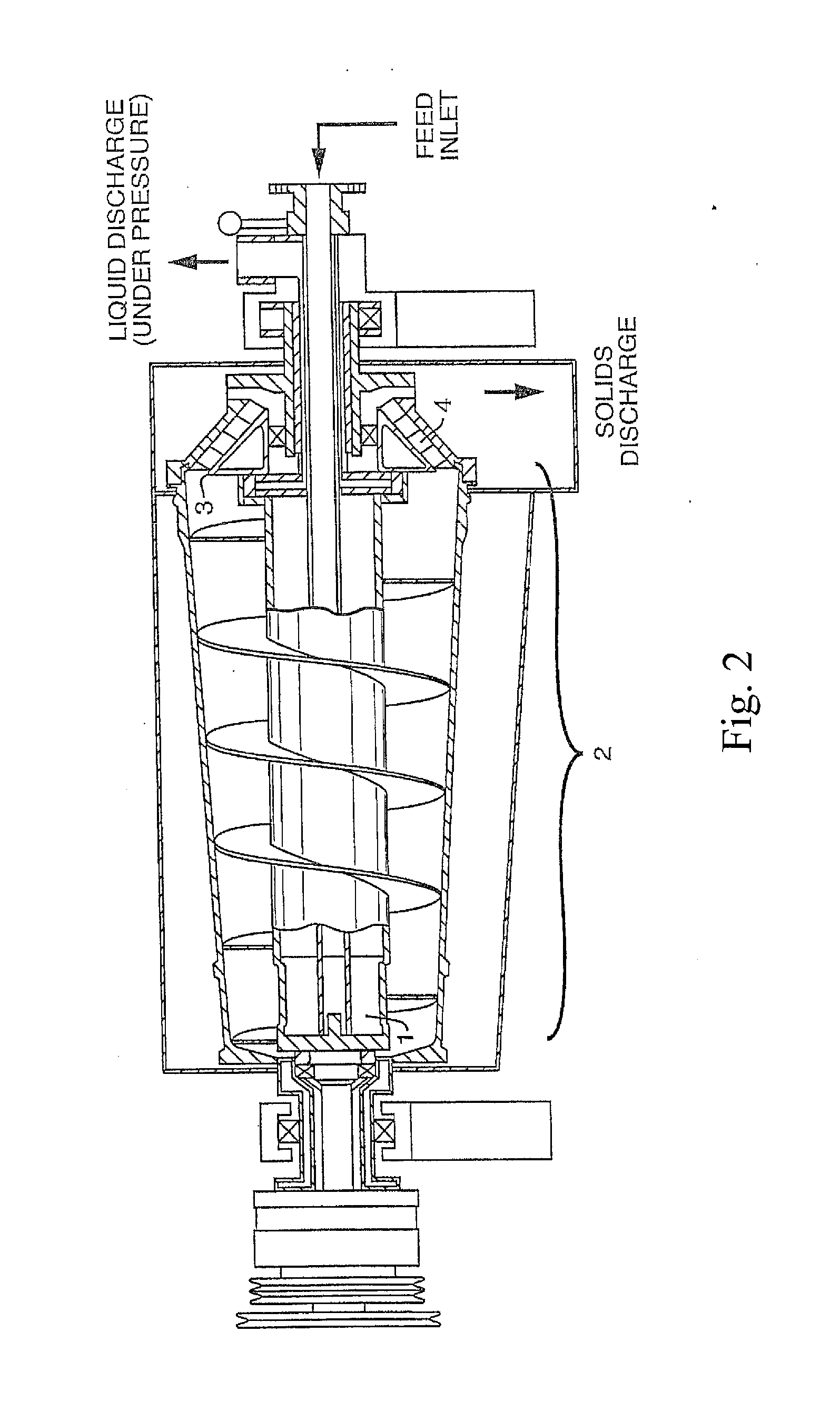Method For Processing Crustaceans To produce Low Fluoride/Low Trimethyl Amine Products Thereof
a technology of low fluoride and trimethylamine, which is applied in the field of processing crustaceans, can solve the problems of unfavorable health, low fluoride content, and unsuitable products, and achieves the effects of less suitable, less brown color, and high fluoride conten
- Summary
- Abstract
- Description
- Claims
- Application Information
AI Technical Summary
Benefits of technology
Problems solved by technology
Method used
Image
Examples
example i
Production of Low Fluoride Krill Oil
[0123]The feed material, ‘Emerald krill meal’ granules (Olymeg® or low fluoride PPC prepared as described herein), were supplied in a sealed plastic bag containing approximately 25 kg. The feed material was kept frozen until used in extractions. The granules have a size distribution typically in the range 2 to 5 mm, but a number of fine fragments were also present. The granules are greasy to the touch but still break up under compression rather than smear.
[0124]5 kg batches of feed material in granular form, as processed using supercritical CO2 as solvent and azeotropic food grade ethanol as co-solvent, the weight of the ethanol being 23% of the weight of CO2. The plant was pre-pressurised to operating pressure with CO2 only, and ethanol was added when CO2 circulation started. Solvent to feed material ratio was 25:1 or greater and co-solvent to feed material ratio was 5:1. Runs were carried out under two extraction conditions; 300 bar at 60° C., a...
example ii
Lipid Extraction Efficiency
[0133]This example demonstrates an exemplary analytical lipid extraction with the Soxhlet method comparing conventional krill meal with a low fluoride krill meal (e.g. low fluoride PPC) as described herein. Soxhlet method is a standard method in quantitative determination of fat content of foods and feeds and thus it can be used as a reference method to determine the extractability of various krill meals. For example, the Soxhlet method may be carried out as below using petroleum ether (boiling point 30-60° C.). Conventional krill meal was prepared as described in US 2008 / 0274203 (Aker Biomarine ASA, Bruheim et al.) and the low fluoride PPC was prepared according to the present invention.
[0134]The neutral lipids are often part of large aggregates in storage tissues, from which they are relatively easily extracted. The polar lipids, on the other hand, are present as constituents of membranes, where they occur in a close association with proteins and polysac...
example iii
Determination of Fluoride Content
[0138]This example presents one method of determining fluoride content of krill products as fluoride by chemical analysis using an ion selective electrode.
[0139]A low fluoride PPC krill meal was prepared as described herein and extracted in accordance with Example I to create a low fluoride krill oil were analyzed for fluoride content and compared with conventional preparation processes. Briefly, the method disclosed herein removes, in most part, the krill exoskeleton from the krill meal thereby reducing the fluoride content. In contrast, the krill exoskeleton is included in the conventional krill meal thereby having relatively high levels of fluoride. Conventional processes are, for example, described in WO 2002 / 102394 (Neptune Technologies & Bioresources) and US 2008 / 0274203 (Aker Biomarine ASA).
[0140]The krill meals analyzed for fluoride content were produced by: i) a low fluoride method of present invention; and ii) a whole krill material produce...
PUM
| Property | Measurement | Unit |
|---|---|---|
| wt % | aaaaa | aaaaa |
| wt % | aaaaa | aaaaa |
| wt % | aaaaa | aaaaa |
Abstract
Description
Claims
Application Information
 Login to View More
Login to View More - R&D
- Intellectual Property
- Life Sciences
- Materials
- Tech Scout
- Unparalleled Data Quality
- Higher Quality Content
- 60% Fewer Hallucinations
Browse by: Latest US Patents, China's latest patents, Technical Efficacy Thesaurus, Application Domain, Technology Topic, Popular Technical Reports.
© 2025 PatSnap. All rights reserved.Legal|Privacy policy|Modern Slavery Act Transparency Statement|Sitemap|About US| Contact US: help@patsnap.com



